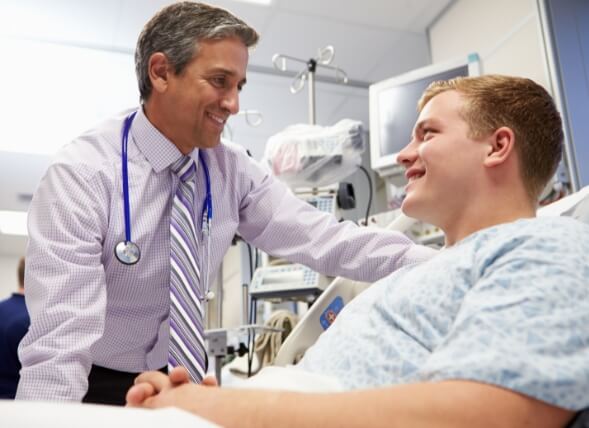When the body is unable to properly store and utilize glucose, which is necessary for energy, both type 1 and type 2 diabetes can develop. After that, this glucose builds up in the blood and is unable to reach the cells that require it, posing a major risk of problems.
Although it can happen to adults as well, type 1 diabetes typically first manifests in children and teens. In type 1 diabetes, the pancreatic beta cells are attacked by the immune system, which prevents them from producing insulin.
Type 1 diabetes cannot be prevented and is frequently inherited. Type 1 diabetes affects 5–10% of individuals with diabetes.
Although type 2 diabetes can still strike youth, it is more likely to do so as they get older. In this type, insulin is produced by the pancreas but is ineffectively utilized by the body. In this article, we are going to discuss the symptoms, causes and diagnosis that you might need for your healthy, better lifestyle!
Table of Content
● Description of diabetes
● Symptoms of diabetes
● Causes of type- 1 and type-2 diabetes
● Where to seek advice
What is Diabetes?
Blood sugar levels that are too high can lead to diabetes. It happens when your body doesn’t process insulin effectively or when your pancreas doesn’t produce any insulin at all. All ages are impacted by diabetes. Diabetes usually manifests as a chronic condition that can be controlled with medication and/or dietary adjustments.
Carbohydrates included in your meals and beverages are the main source of glucose. It is the primary energy source for your body. When glucose is in your bloodstream, it requires assistance to go to where it needs to go. Insulin is the secret. Glucose builds up in your system and causes high blood sugar if your pancreas isn’t producing enough insulin or your body isn’t processing it effectively.
Both types of diabetes can cause consequences like blood vessel and organ damage, renal disease, eyesight loss, neurological disorders, and cardiovascular and kidney illness.
More than 34 millionTrusted Source Americans, according to the CDC, may have diabetes, and over 25% of them may not be aware of it.
What are the symptoms of Type-1 and type-2 Diabetes?
Blood sugar levels influence the severity of diabetes symptoms. Some people may not exhibit symptoms, particularly if they have prediabetes, gestational diabetes, or type 2 diabetes. Symptoms of type 1 diabetes frequently appear suddenly and are more severe.
The following are a few signs of type 1 diabetes:
● Noticing a greater-than-normal thirst.
● frequent urination.
● weight loss without exerting effort.
● Ketones are present in the urine. When there is insufficient insulin available, muscle and fat are broken down, producing ketones as a consequence.
● becoming worn out and fragile.
● irritated or experiencing other mood swings.
● having wounds that take a long time to heal.
The following are some signs of Type- 2 diabetes:
● increased hunger
● increased thirst
● fuzzy eyesight
● exhaustion and lethargy
● numbness in the hands or feet
● slow-healing wounds
● unexplained weight loss
How is Hyperglycemia and Hypoglycemia related to type-2 Diabetes?
Hyperglycemia
The symptoms of hyperglycemia, such as frequent urination and increased thirst, can occur if a person’s blood sugar is too high.
This can result in ketoacidosis, a potentially fatal illness that needs immediate medical care.
Ketoacidosis signs and symptoms include:
● having trouble breathing
● an aroma of fruit on the breath
● nauseous and dizzy
● coma
Hypoglycemia
When blood sugar levels are too low, hypoglycemia occurs. Blood sugar levels below 70 milligrams per deciliter (mg/dL) usually cause symptoms to manifest.
Early signs consist of:
● chills, sweat, and a pale face
● feeling jittery, apprehensive, and nervous
● quick heartbeat
● feeling lightheaded and dizzy
● Nausea
● feeling exhausted and weak
● headaches
How can you know if you have Diabetes?
Type 1 diabetes frequently develops suddenly. A person should see a doctor as soon as possible if they experience symptoms.
In contrast, a person with type 2 diabetes in its early stages might not exhibit any symptoms. A normal blood test, however, will reveal high blood sugar levels at this point.
Obesity and other type 2 diabetes risk factors should be regularly monitored to make sure the glucose levels are within normal range. They may have diabetes or prediabetes if tests reveal they are high.
Prediabetes is a condition in which a person has high blood sugar levels but not quite the levels required for a type 2 diabetes diagnosis. Type 1 or type 2 diabetes can be diagnosed with the aid of the tests listed below, albeit not all of them may be helpful for both types:
1. A1C test: For an A1C test, a doctor will draw blood to determine the patient’s average blood glucose level over the previous two to three months.
2. FPG Test: An individual’s blood glucose levels are determined using a fasting plasma glucose (FPG) test. Many patients undergo the test before breakfast because they are required to go without food for at least 8 hours prior to the exam.
3. Oral glucose tolerance test (OGTT): This examination gauges an individual’s glucose metabolism. Blood glucose levels will be checked on a patient two hours before and two hours after consuming a sweet beverage.
What are the Causes of Diabetes?
Type-1 Diabetes
This type causes the immune system to wrongly assault the pancreatic beta cells, which are responsible for producing insulin, according to scientistsTrusted Source. Although they do not know what causes it, childhood illnesses might be a factor.
These cells are destroyed by the immune system, which prevents the body from producing enough insulin to control blood sugar levels. A person with type 1 diabetes will require more insulin for the duration of their lives, starting when they are diagnosed.
The first diagnosis of type 1 is frequently made in youth and young adults, while it can sometimes occur later in life. It might appear out of nowhere, and it usually becomes worse quickly.
Type- 2 Diabetes
The body’s cells begin to reject the effects of insulin when a person has type 2 diabetes. As a result, glucose is unable to reach the cells. Instead, it accumulates in the blood, and more insulin is needed to let it into the cells. Insulin resistance is what causes this.
The body eventually stops making enough insulin, which makes it unable to utilise glucose efficiently.
The onset of symptoms could be years away. From the earliest stages, people can slow the disease’s course through medicine, diet, and exercise.
A person with type 2 diabetes does not require more insulin in the early stages. But when the illness worsens, patients might require it to control their blood sugar levels. It might need them to go to an emergency room for a checkup as well.
When to visit a Doctor
If you suspect diabetes in yourself or your child, Diabetic symptoms should be reported to your healthcare physician immediately. The sooner the problem is identified and treated, the better.
If you have previously received a diabetes diagnosis, You’ll require close medical monitoring following your diagnosis until your blood sugar levels settle.
References
https://www.niddk.nih.gov/health-information/diabetes/overview/symptoms-causes
https://www.mayoclinic.org/diseases-conditions/diabetes/symptoms-causes/syc-20371444






